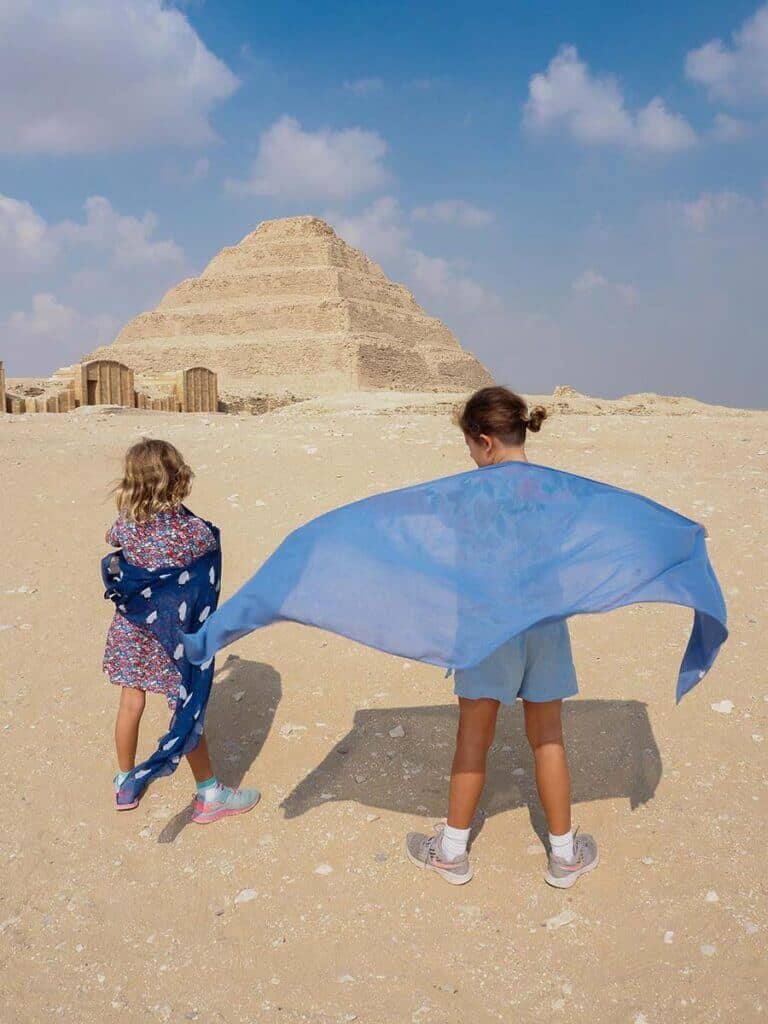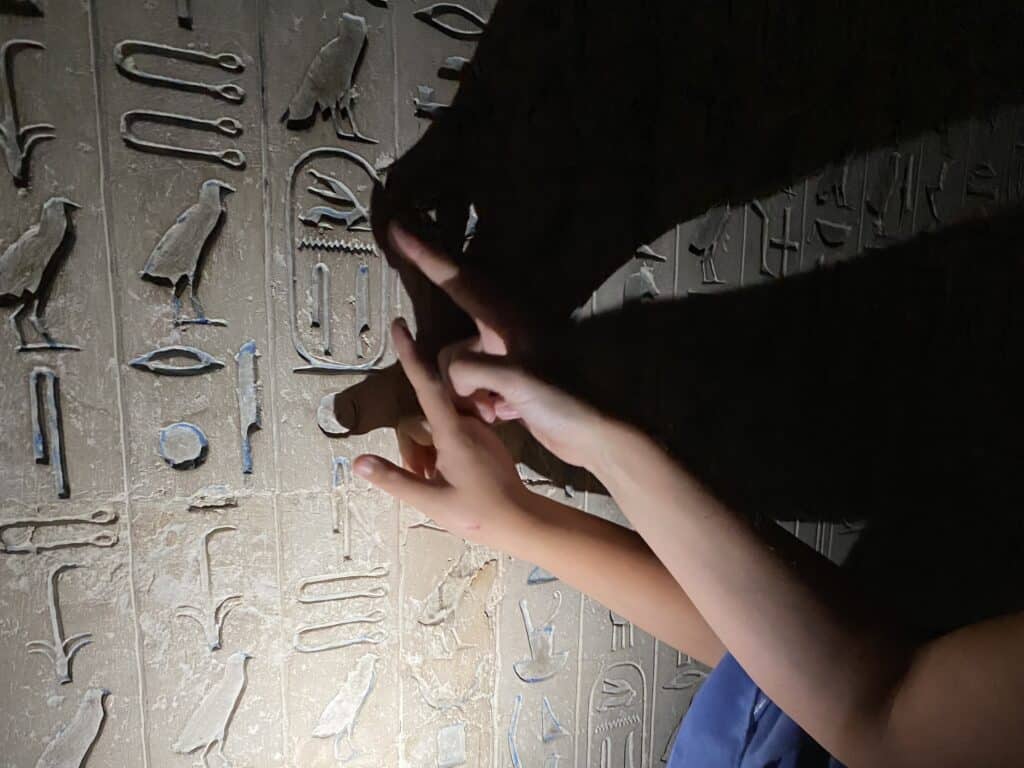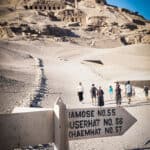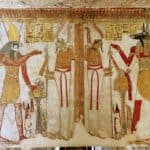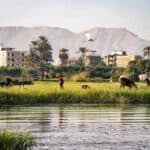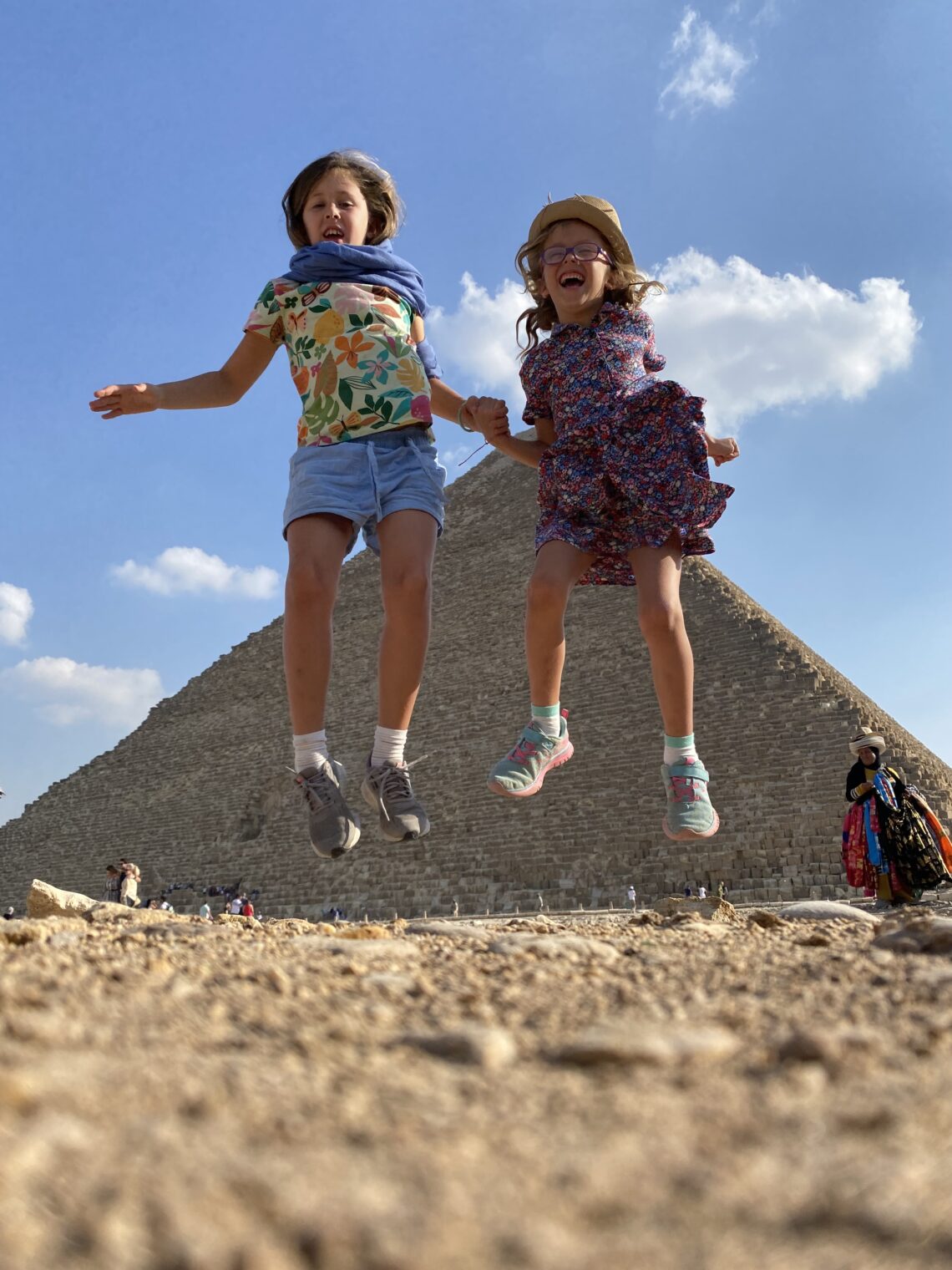
A kids guide to the pyramids of Egypt
We all know about the pyramids of Egypt, but when our kids decide to ask us all questions, we thought we would give you a head start with all the answers to your kids questions in our Great Pyramids of Egypt Facts.
But there is so much more to Egypt than just the pyramids. Check out our guide to Cairo here.
How To Deal With The sellers At The Pyramids
As we passed the Great Pyramid Complex ticket office, we experienced for the first time the relentless vendors stationed at many of the key historic sites within the country. Egyptian salespeople are notorious for their aggressive and bold tactics. Having a guide with you will lessen this harassment a little. The most important phrase you can learn is La Shukran (no thank you) and if that doesn’t have the desired effect, a more forceful “La.”
Engaging in conversation allows the sellers more time to work their sales charm on you. If you have no interest then be clear at the start. Ignoring them outright works (it was very difficult with my inner British politeness. It’s not hard to do as there are often more vendors talking to you then it’s possible to concentrate on. But the most important thing is, don’t say “maybe later” or “I’ll think about it”. It’s either “no” or you mean yes.
A word of warning to the kids, don’t take anything they are given as a ‘gift’, usually when the parents are distracted, it’s a sneaky way to make a sale…you can’t say no to your kid, right?
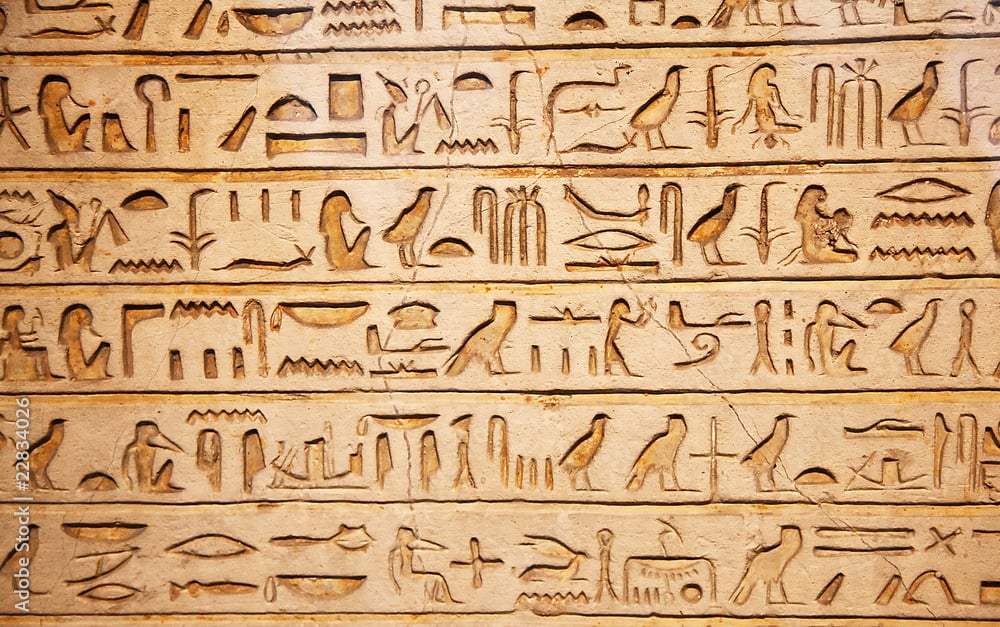
EGYPT FACTS FOR WORLDSCHOOLING KIDS
Great Pyramid Facts for Kids
What are the pyramids?
The pyramids were built as tombs for the pharaohs. The Egyptians believed that the pyramids would allow the pharaohs to continue their journey to the afterlife. The pyramids were originally filled with treasures and other items that the pharaohs would need in the afterlife.
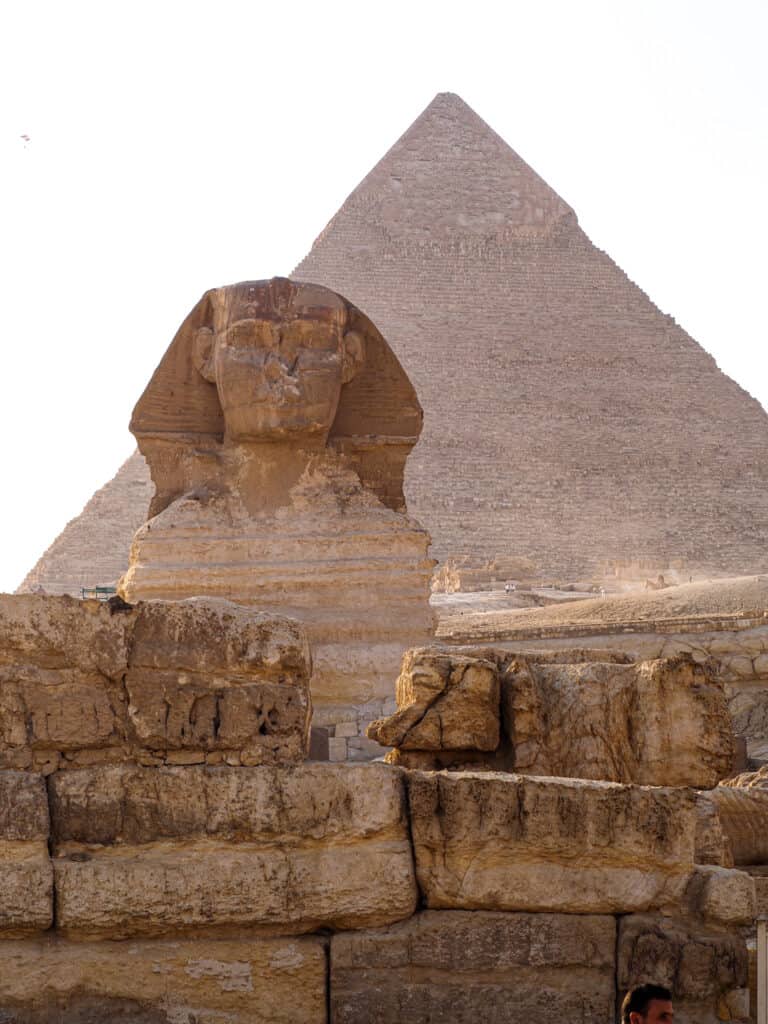
How many Pyramids are in Cairo?
The exact number of pyramids in Cairo is difficult to say, as there are many small and less well-known pyramids scattered around the city. However, there are at least 13 pyramids that are big enough and well-preserved enough to be considered tourist destinations. These pyramids are located in three main groups: The Giza necropolis, The Saqarra Necropolis and The Dashur Necropolis.
How were the pyramids built?
The pyramids are built with massive blocks of stone. The blocks of stone that make up the pyramids are incredibly big and heavy. Some of the blocks weigh up to 2.5 tons. The Egyptians used a variety of methods to transport and lift these blocks, including ramps, rollers, and levers.
How old are the pyramids?
Based on the estimated construction dates, the pyramids in Cairo are approximately 4,500 – 4,600 years old. The oldest pyramid, the Pyramid of Djoser, is estimated to have been built around 2686 BC, while the youngest pyramid, the Pyramid of Menkaure, is estimated to have been built around 2504 BC.
The pyramids are very well-preserved. The pyramids have been standing for thousands of years, and they are still in relatively good condition. This is due to the fact that the pyramids were built with such durable materials and that they were not subjected to much weathering or damage over the centuries.
The pyramids are pretty intriguing. There is still a lot that we do not know about the pyramids, such as how they were built and what purpose they served. There are LOTS of very interesting theories.
Which is the oldest pyramid?
Here is a timeline of the construction of the pyramids in Saqqara and Dahshur:
- 2686 BC: Construction of the Step Pyramid of Djoser begins under Pharaoh Djoser.
- 2649 BC: Construction of the Bent Pyramid of Dashur begins under Pharaoh Sneferu.
- 2613 BC: Construction of the Red Pyramid of Dashur begins under Pharaoh Sneferu.
- 2575 BC: Construction of the Pyramid of Meidum begins under Pharaoh Sneferu.
- 2560 BC: Construction of the Great Pyramid of Giza begins under Pharaoh Khufu (Cheops).
- 2558 BC: Pharaoh Khafre (Chephren) succeeds Khufu and begins construction of his pyramid.
- 2532 BC: Pharaoh Khafre dies, and his son Menkaure (Mykerinos) succeeds him. Construction of Menkaure’s pyramid begins.
- 2530 BC: Construction of the Sphinx is completed.
- 2518 BC: Construction of all three pyramids is completed.
The pyramids in Saqqara and Dahshur were innovative in their design and construction. The Step Pyramid of Djoser is the first true pyramid in Egypt, and it represents a significant advancement in pyramid building technology.
The Bent Pyramid of Dashur is so named because it changes direction partway up, and this is thought to be due to a structural problem that the builders encountered when they realized they were wonky and needed to readjust. The Red Pyramid of Dashur is the first true smooth-sided pyramid in Egypt, and it is a masterpiece of engineering.
The Giza Necropolis:
This is the most famous group of pyramids in Egypt, and it is located on the Giza Plateau, which is about 12 kilometers southwest of Cairo. The Giza Necropolis includes the three Great Pyramids of Giza (the Pyramid of Khufu, the Pyramid of Khafre, and the Pyramid of Menkaure), as well as the Sphinx.
Pyramid of Khufu
The Great Pyramid of Giza, also known as the Pyramid of Cheops, was built for the pharaoh Khufu during the 4th dynasty of the Old Kingdom of Egypt. It is the oldest and largest of the three pyramids in the Giza Necropolis, and it is considered to be one of the Seven Wonders of the Ancient World.
Construction of the pyramid began around 2560 BC and took about 27 years to complete. The pyramid is made up of over 2.3 million blocks of stone, each weighing an average of 2.5 tons. The blocks were quarried from nearby quarries and transported to the site using a system of ramps and rollers.
The pyramid is shrouded in mystery. The exact method used to build the pyramid is unknown, and there is much debate about how the Egyptians were able to transport and lift such massive blocks of stone.
The Pyramid of Khufu is a UNESCO World Heritage Site and is one of the most popular tourist destinations in Egypt. It is a must-see for anyone interested in ancient Egypt.
- Pyramid of Khufu: The Great Pyramid of Giza is open to the public, and you can enter it through the main entrance on the north side. You can also explore the underground chambers and the grand gallery.
Pyramid of Khafre
The Pyramid of Khafre, also known as the Pyramid of Chephren, is the second largest pyramid in the Giza Necropolis. It is built on slightly higher ground than the Pyramid of Khufu, which gives it the appearance of being taller.
Khafre was the son of Khufu, and he ruled Egypt from 2558 BC to 2532 BC. The pyramid was built for him during his reign.
It is made up of over 2 million blocks of stone, and it is estimated to have taken about 20 years to complete.
The pyramid is still in relatively good condition, and it is surrounded by several other monuments, including the Sphinx and the Valley Temple.
The Great Sphinx of Giza
A colossal limestone statue with the body of a lion and the head of a pharaoh, is thought to represent Pharaoh Khafre. It stands near the pyramids and is an iconic symbol of ancient Egyptian civilization.
Pyramid of Menkaure
The Pyramid of Menkaure, also known as the Pyramid of Mykerinos, is the smallest of the three pyramids in the Giza Necropolis. It was built for Menkaure, the grandson of Khufu, and it is estimated to have taken about 15 years to complete.
Pyramid of Menkaure: The Pyramid of Menkaure is also open to the public, and you can enter it through the main entrance on the north side. The pyramid is the smallest of the three Great Pyramids, but it is still an impressive monument.
The Dahshur Necropolis:
This group of pyramids is located about 40 kilometers south of Cairo. The Dahshur Necropolis includes the Bent Pyramid of Dashur, the Red Pyramid of Dashur, and a number of smaller pyramids.
Bent Pyramid of Dashur
The Bent Pyramid of Dashur is located about 40 kilometers south of Cairo. It was built for the pharaoh Sneferu, the father of Khufu. The pyramid is so named because its wonky!
The Bent Pyramid of Dashur is a UNESCO World Heritage Site and is a fascinating monument that provides a glimpse into the early development of pyramid construction in Egypt.
Red Pyramid of Dashur
The Red Pyramid of Dashur is located about 40 kilometers south of Cairo. It was also built for the pharaoh Sneferu, the father of Khufu.
Red Pyramid of Dashur: The Red Pyramid of Dashur is open to the public, and you can enter it through the main entrance on the north side. This is the first true pyramid ever built, and it is a masterpiece of engineering.
The Saqqara Necropolis:
This is the largest and most extensive group of pyramids in Egypt, and it is located about 30 kilometers south of Cairo. The Saqqara Necropolis includes the Pyramid of Djoser, the Step Pyramid of Meidum, and a number of other pyramids.
Pyramid of Djoser
The Pyramid of Djoser is the world’s oldest pyramid and was built for the pharaoh Djoser during the 3rd dynasty of the Old Kingdom of Egypt. It is located in Saqqara, which is about 30 kilometers south of Cairo.
The pyramid was built in a series of six stages, and it is made up of over 6 million blocks of stone. The pyramid is topped with a limestone capstone, which is now missing.
The Pyramid of Djoser is a UNESCO World Heritage Site and is one of the most important monuments of ancient Egypt. It is a complex and fascinating structure, and it provides a glimpse into the early development of pyramid construction in Egypt.
Step Pyramid of Meidum
The Step Pyramid of Meidum is located about 60 kilometers south of Cairo. It was originally built as a six-step pyramid for the pharaoh Sneferu, the father of Khufu. However, the pyramid was later rebuilt as a true pyramid, and it is now one of the most impressive monuments in the area.
Step Pyramid of Meidum: The Step Pyramid of Meidum is also open to the public, and you can enter it through the main entrance on the north side.
Imhotep – Architect Extraordinaire: The Step Pyramid of Djoser at Saqqara was designed by Imhotep, an ancient Egyptian polymath. He is considered one of the world’s first known architects and physicians.
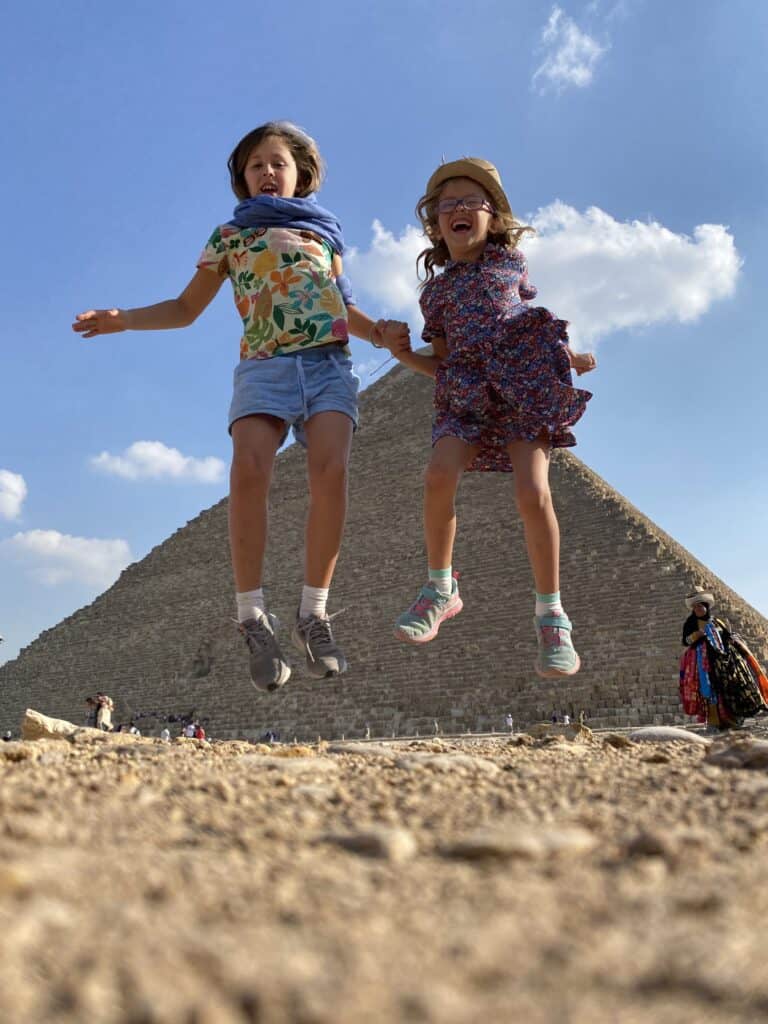
Interesting facts about the pyramids
- Precision in Construction: The precision in the construction of the pyramids is remarkable. The sides of the Great Pyramid are aligned with incredible accuracy to the cardinal points of the compass.
- Engineering Marvel: The construction of the pyramids remains a subject of fascination and debate. Theories range from the use of ramps to advanced tools and techniques. The exact methods used by the ancient Egyptians are still not fully understood.
- Solar Boat Pits: In Giza, near the Great Pyramid, pits containing dismantled wooden solar boats were discovered. These boats were likely intended to transport the pharaoh’s soul in the afterlife.
- Alignment with Constellations: Some theories propose that the layout of the Giza Pyramids mirrors the alignment of three stars in Orion’s Belt. This alignment is thought to have had symbolic significance for the ancient Egyptians.
- Mastabas and Step Pyramids: Before the construction of the true pyramids, earlier structures known as mastabas and step pyramids were built. These structures evolved over time into the iconic pyramids we recognize today.
- Purpose of Pyramids: While commonly associated with tombs for pharaohs, the pyramids also held religious and symbolic significance. They were seen as a bridge between the earthly and divine realms.
Can You Go Inside The Pyramids?
All three major pyramids of the Great Pyramid Complex allows entry. Going inside the pyramids does come at an additional cost, however. Also, if a guide offers to take your picture, I can almost guarantee it will be terrible!
The tombs and hallways of the Great Pyramids have been stripped bare by tomb raiders over the past 4 millennia, and are basically barren inside. They are a far cry from the dramatic experiences inside the Valley of the Kings in Luxor. The hallways inside the pyramids are small and stuffy. If you are at all claustrophobic, think twice about whether this experience is for you.
How Much Does It Cost To Visit The Great Pyramid Complex and The Great Sphinx With Children?
Like most attractions in Egypt, the cost of visiting the Great Pyramid Complex can be … well, complex. There are many levels to access, and how much you’ll pay depends upon what you want to get out of your family trip to the Egyptian pyramids.
In almost every Egyptian attraction there are no additional costs for camera phones. However, if you want to bring in extra camera gear such as a DSLR, video camera, or tripod, you’ll usually have to pay an additional fee for EACH gear type at these attractions. The cost to bring camera equipment into the individual attractions is: Camera- 50LE, Video- 300LE, Tripod- 20LE. Inside the pyramids, you cannot bring your cameras, video cameras, and tripods. The cost of visiting the Great Pyramid Complex at the time of our visit in 2020, was like this:
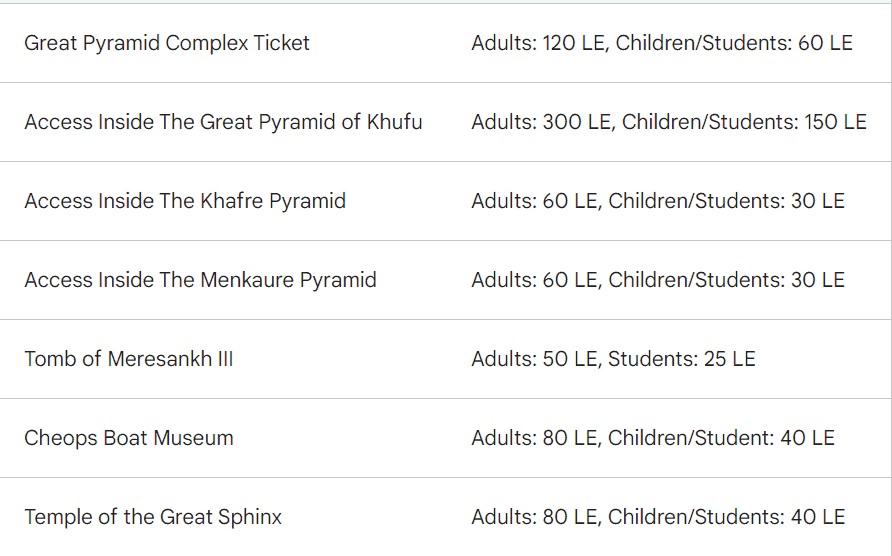
Well, we hope that has given you a head start with all the answers to your kids questions about the pyramids. Im sure your kiddos will come up with plenty more questions too, it is such an inspiring place.
You can download some FREE Egypt Creative Thinking resources over on our RESOURCES PAGE for your worldschooling adventures.

Meet the author
Lisa is the founder of Boston Tribe Travels. She has lived and travelled abroad for the last 15 years, visited more than 30 countries and has done most of that with her husband and two children. As a full time travel family, they like to travel slow, worldschool and seek new adventures. From living in Borneo for 5 years to backpacking South America, Lisa shares a wealth of travel experience to empower more families to travel and learn together.


